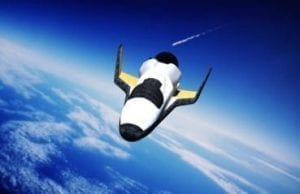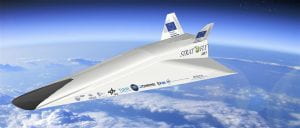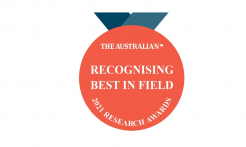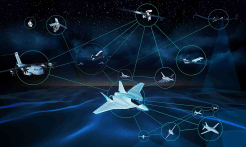Within the atmospheric domain new-entrant platforms performing point-to-point operations will require a global multi spaceport network in proximity of major metropolitan hubs. As such, the continued use of current segregation type methods is not a viable option and would be unacceptable for the global aviation industry, emphasising the necessity for new-entrant spacecraft to transition to mixed flow Trajectory Based Operations (TBO). In enabling this, novel operational concepts such as Space Transition Corridors (STC) and Four Dimensional Compact Envelopes (4DCE) have been proposed. These concepts make use of precise Time and Space Position Information (TSPI) provided by advanced Communication, Navigation and Surveillance/Air Traffic Management and Avionics (CNS+A) technology to optimise hazard volumes and increase airspace efficiency and capacity. Nevertheless, the proposed concepts are still very much in their infancy, calling for continued research efforts that focus on Air Traffic Management/Space Traffic Management (ATM/STM) harmonisation and novel spacecraft-focused Air Traffic Flow Management (ATFM) techniques. The introduction of these technologies should fundamentally base upon new-entrant platform performance, and the physical and computational limitations identified in both re-entry and launch trajectory planning methodologies. Additionally, the environmental sustainability of atmospheric operations needs to be further verified as pertinent subjects such as spacecraft gaseous emissions and noise are not well documented in the literature.
Regarding the on-orbit phase, the unique hazards associated with space weather events represent an important problem to be addressed. However, the main challenges poised to future STM will be the avoidance/mitigation of on-orbit collisions. Post mission disposal manoeuvres with the aim to mitigate space debris generation within the Low Earth Orbit (LEO) and Geostationary Orbit (GEO) regions are currently under various levels of ISO standardisation. Studies demonstrate that the effectiveness of these strategies is fundamentally dependent on operational compliance levels, where an increase in current disposal efforts is required to preserve operational sustainability.
Continued research in the areas of stochastic spaceflight mechanics within the on-orbit environment has seen the development of sound collision broadcast methodologies that are widely used in industry. However, a growing number of false alarms due to unreliable observational data highlights the need for a future STM system to adopt cyber-physical architectures based on advanced networking, computing and control technologies to ensure space object data fidelity and to increase the reliability of predictions. Current standards and guidelines form an initial basis for the definition of a viable STM infrastructure however, continued efforts are required to delineate a code of conduct, and an equivalent rules of the “air” to define operation norms and enforce standards for space transport operations. Moreover, a lack of certification standards of CNS+A systems above FL600 demands in-quest into the actual performance of these systems within and above the near space region as only then can cyber-physical system architectures be confidently developed and deployed on a global scale to support a fully integrated (i.e., compatible and interoperable) ATM/STM network.
You can download our detailed review of emerging STM concepts and technologies from: https://www.sciencedirect.com/science/article/pii/S0376042118301660







